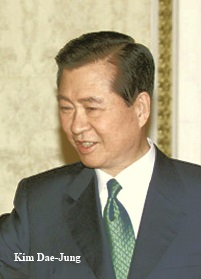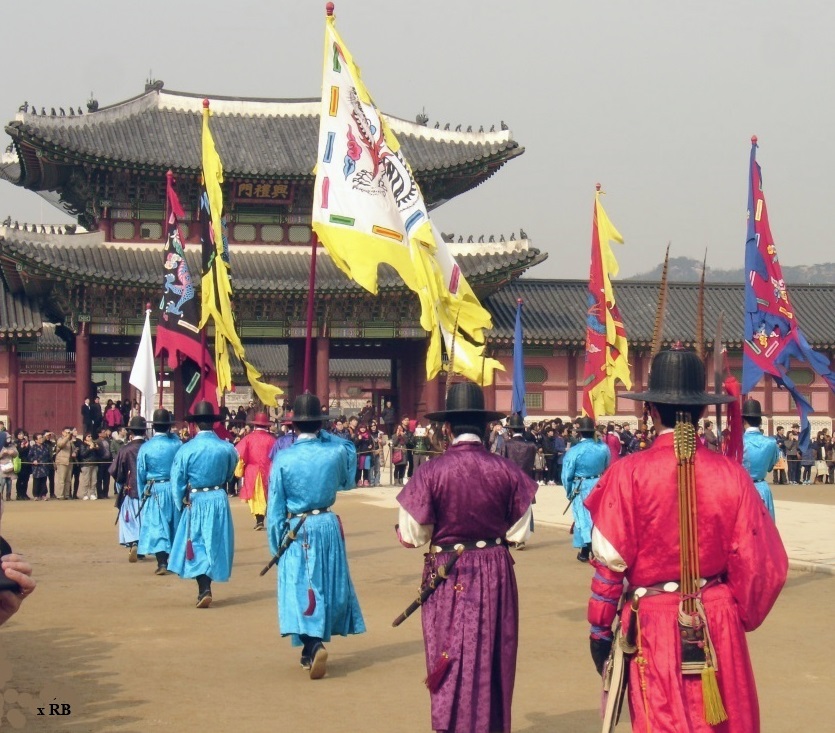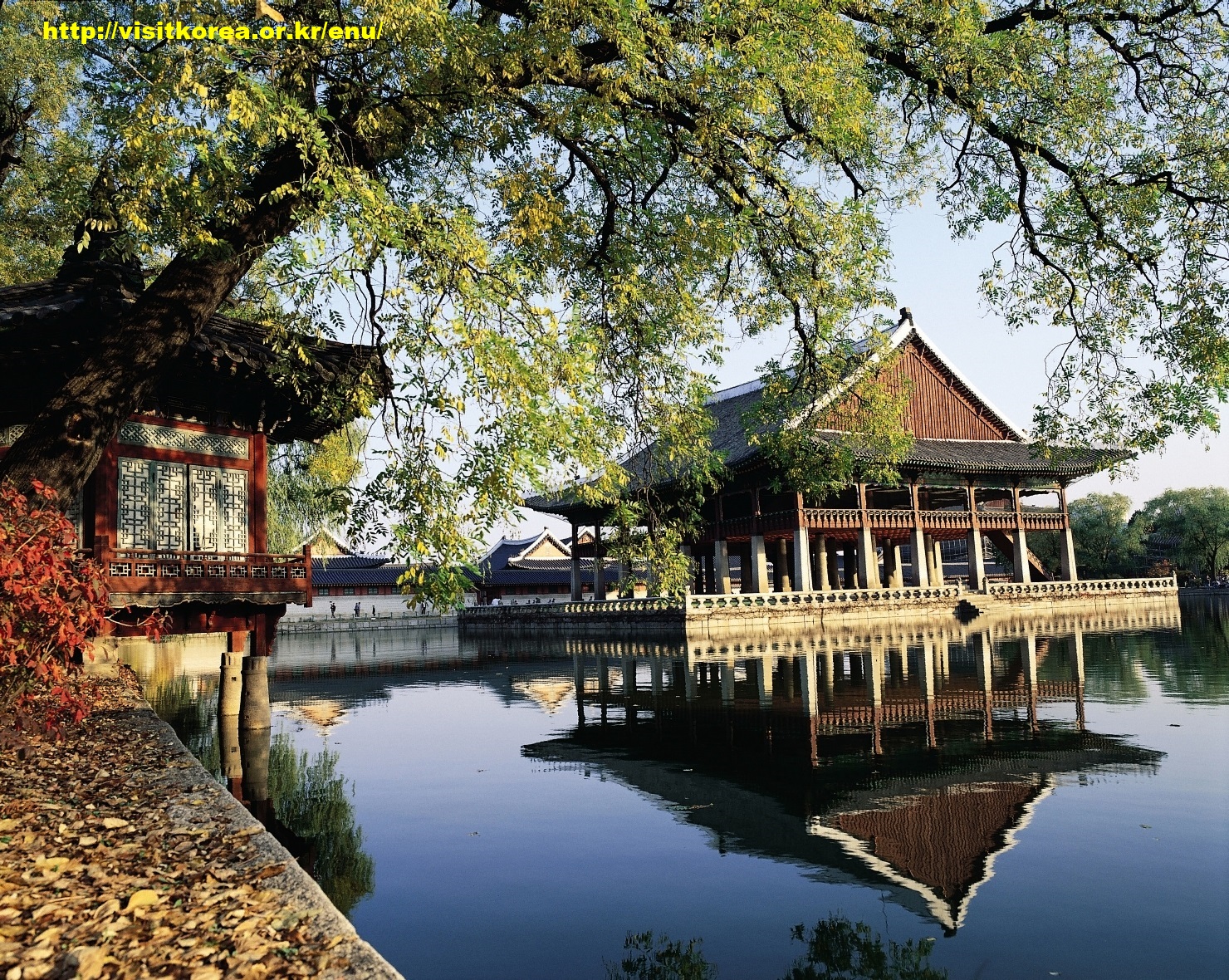An Enduring Culture:
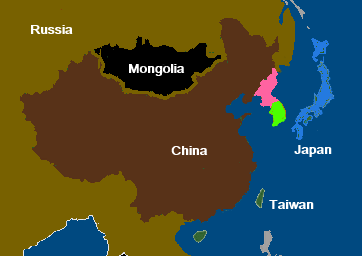 The Korean Peninsula is surrounded by China in the west, Japan in the east, and by North Korea in the north. With rail connections having been severed for many decades between North and South, South Korea is inaccessible by land transportation, except for highway access to the Mount Kumgang resort and to an industrial park operated by South Korean companies. Plans have been formulated for connection to the Trans Siberian Railway, but the goal has not yet been realized.
The Korean Peninsula is surrounded by China in the west, Japan in the east, and by North Korea in the north. With rail connections having been severed for many decades between North and South, South Korea is inaccessible by land transportation, except for highway access to the Mount Kumgang resort and to an industrial park operated by South Korean companies. Plans have been formulated for connection to the Trans Siberian Railway, but the goal has not yet been realized.
Though the oldest pottery found on the peninsula dates back 8,000-years, Korean culture has existed for nearly 5.000 years. Tribes migrated south from what is now Mongolia, through China, and eventually migrated to the volcanic island of Jeju Do (jeh-joo doh), as well as to many of the smaller islands that surround the peninsula.
Around 1000 CE, the three ancient kingsoms of
Goguryeo,
Baekje, and
Silla were unified under the banner of
Goryeo. Codified laws and a civil service system evolved and culture was heavily influenced by the propagation of Buddhism, and by the emergence of Confucianism.
Hangeul:
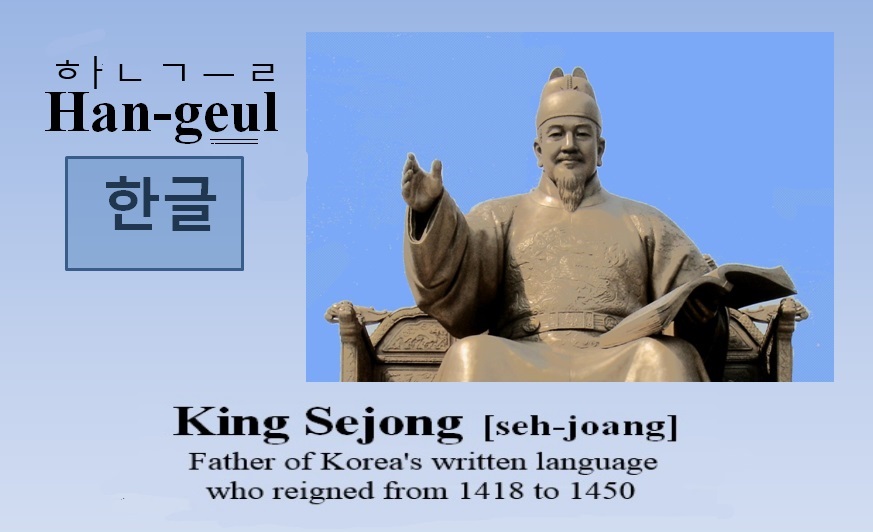 the Latin alphabet and the Korean alphabet, i.e. Hangeul. The original Hangeul alphabet included symbols for the sounds of: "z", "zh", "f", and "v"; these letters have, however, been deleted from modern Hangeul.
the Latin alphabet and the Korean alphabet, i.e. Hangeul. The original Hangeul alphabet included symbols for the sounds of: "z", "zh", "f", and "v"; these letters have, however, been deleted from modern Hangeul.
Korean written language is called
Hangeul (also spelled
"hangul" [hahn-geul], which is an alphabetic language, as are Latin or Greek. King Sejong (1397–1450), who reigned from 1418 to 1450, created Hangeul in the mid-15th-century. As in Europe and elsewhere, most people did not read or write. In Europe, everyone could speak the vernacular language of the local region, while the scholars across the continent read and wrote in Latin or classical Greek. In Korea, the scholars read and wrote with Chinese-derived ideograms, or characters, called
Hanja characters.
Origins:
Although similarities between Japanese and Korean genetic and ethnic traits exist, determining the migration path of modern-day inhabitants of Japan remains elusive. Tracing the female-transmitted
mitochondrial DNA (mtDNA), however, indicates that people migrated along different paths, one path leads to Korea and the other leads to Japan. Elements of Korean and Japanese mitochondrial DNA reveal
differences in ancesty.
from aboriginal Australia.
Population:
About 76-million people live on the Korean Peninsula today, 25 million in the North and 51 million in the South. The present South–North boundary between the "Two Koreas" is called the Military Demarcation Line (MDL), which is roughly defined along the 38th Parallel. On either side of the MDL is the DMZ (Demilitarized Zone), which was established by the Armistice signed at the end of the Korean War in June 1953. No formal peace treaty has ever been signed.
Despite being a point of political contention, an interesting outcome of the DMZ delights nature lovers and environmentalists. With very few human creatures around, the wild creatures are thriving.
A Nation Divided:
Japan pacified the Korean monarchy in 1906 and later annexed the peninsula in 1910.
The annexation of Korea by Japan preceded and influenced the eventual division of Korea into two separate countries by the Allied Powers during World War II. The inter-related disposition of east and west Germany, north and south Vietnam, and north and south Korea is a story for another day.
A Side Note:
What is in a name? On this map (above right), look for "Sea of Japan". One might wonder, should this body of water that separates the countries of Japan and Korea be called the "Sea of Japan" or the "Sea of Korea". From this observer's point of view, neither name seems appropriate.
In some circles, this same body of water is called the "East Sea", that is, east of Korea. Others vehemently argue that this body of water should be called the "West Sea", i.e. west of Japan. Unfortunately, despite all the historical citations and seemingly rational claims, neither of these names is fair to either country. Both Korea and Japan share this body of water. A proper name for this body of water should reflect shared interests and harmonious sentiment if both Korea and Japan are to feel good about whatever name is eventually adopted.
After all points have been argued, one must cast aside historic precedents and look to the future. In the past, the world was often managed by brute force of arms rather than by reason and sentiment. The two countries, Korea and Japan, have suffered severe issues in the past, but retaining anger and resentment will not make the world more peaceful and satisfying. If we can forgive, if not forget, evils of the past and look toward a harmonious future that benefits both, then, perhaps, a meaningful name that reflects the finer qualities of both countries would be the most appropriate name.
We would like to humbly suggest the names, "Sea of Confucius" or "Confucian Sea". Both countries have embraced Confucianism at one point or another in their long histories. Although Japan and Korea have been fierce combatants in past centuries and Japan had occupied Korea for more 35 years in modern times, both countries have shared much in the post World War II era, despite other unresolved divisive issues. As one notable book says, "Blessed be the peacemakers."
![The Axis Powers' flags fly together : Germany, Japan, and Italy. [Wikipedia]](4_Graphics/Axis Powers--Germany-Italy-Japan.gif) The Axis Powers' flags fly together: Germany, Japan, and Italy (Wikipedia).
The Axis Powers' flags fly together: Germany, Japan, and Italy (Wikipedia).
Axis Powers:
Hitler's Germany, Mussolini's Italy, and Japan's Emperor Hirohito challenged the Allied Powers from the late 1930s to the summer of 1945, when the Axis Powers were defeated by the
Allied Powers. The Allied Powers now faced the daunting task of rebuilding many regions of the world that were decimated during hostilities. In the late 1940s, lines of conflict began to form between the Union of Soviet Socialist Republics (USSR, now Russia) and the other nations of the Allied Powers. Political, social, economic, and at times, military antagonisms between the two camps marked the beginning of the socalled "Cold War", which persisted until the USSR collapsed in December 1991.
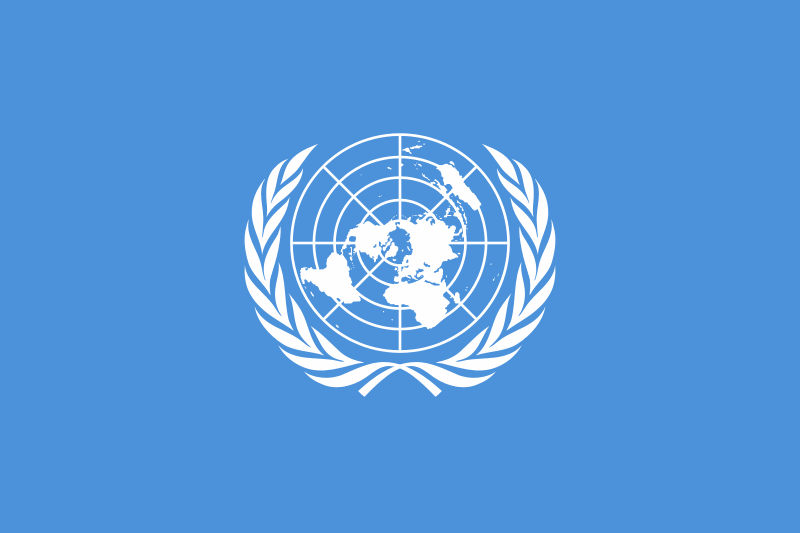 Flag of the United Nations: White on blue are the official colors of the United Nations. The wreathe is of olive branches and represents peace, while the world map represents the many nations of the world. As of 2011, 193 nations are members of the United Nations, which is a dramatic increase from the original 51 members in 1945.
Flag of the United Nations: White on blue are the official colors of the United Nations. The wreathe is of olive branches and represents peace, while the world map represents the many nations of the world. As of 2011, 193 nations are members of the United Nations, which is a dramatic increase from the original 51 members in 1945.
United Nations Unified Command:
Over many millennia, the peninsula has been invaded and sometimes conquered by various factions from China and Japan, as well as being stressed by several Western powers in the 19th century. Five years after the end of World War II, South Korea was invaded again and nearly conquered by North Korea, which was supported by more than one-million Chinese and Soviet troops. Supporting 600,000 South Korean forces were 358,400 combat soldiers from 21 nations under the flag of the United Nations Command. Several other nations, including former colonial ruler Japan, provided logistic and medical assistance to South Korea.
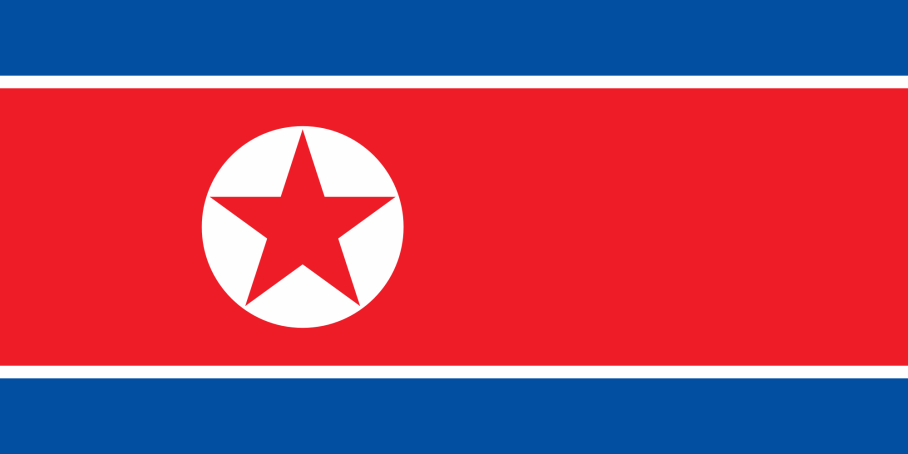 The North Korean flag, adopted 8 September 1948, features a prominent red star on a white field. The red stripe represents revolutionary tradition. The two blue stripes represent sovereignty, peace, and friendship, while the white stripes symbolize purity.
The North Korean flag, adopted 8 September 1948, features a prominent red star on a white field. The red stripe represents revolutionary tradition. The two blue stripes represent sovereignty, peace, and friendship, while the white stripes symbolize purity.
 The Korean Peninsula at night, as seen from an orbiting satellite: a sharp contrast between North Korea and South Korea is seen from space at night. (NASA) Seoul and Pyongyang are easily identified by their relative brightness. Compare the brightness of the two cities. Also quite visible are east-coast Chinese cities, as well as Taiwan and much of densely populated Japan.
The Korean Peninsula at night, as seen from an orbiting satellite: a sharp contrast between North Korea and South Korea is seen from space at night. (NASA) Seoul and Pyongyang are easily identified by their relative brightness. Compare the brightness of the two cities. Also quite visible are east-coast Chinese cities, as well as Taiwan and much of densely populated Japan.
The North,
however, is a completely different story. A quick view of East Asia at night from space, recorded by NASA (National Aeronautics and Space Administration, USA) satellite cameras, reveals the sharp distinction between the society residing north of the DMZ and the society residing south of the DMZ.
Armistice:
After three years of fierce and highly destructive fighting, an
Armistice was signed on 27 July 1953 by North Korea, China, and the United Nations Unified Command; however, South Korea is not a signatory to the Armistice Agreement. A peace treaty was never created to replace the 1953 Armistice agreement; therefore, North Korea and South Korea are
technically still at war with each other, as of April 2013.
A number of armed incidents have occurred over the past six decades, but fortunately, all-out war, thus far, has been avoided.
During the 18 years of Park's autocratic, if not dictatorial rule, the South began to prosper, though many Koreans were averse to Park's aggressive responses to his critics. Park survived two assassination attempts, one attempt of which unintentionally took the life of his wife, the first lady. Despite his endurance, Park succumbed to assassination by the director of the Korean Central Intelligence Agency in 1979. Park's successors oversaw the continued growth of the Korean economy.
Scholars give much attention to the Korean miracle in formulating theories of modernization and economic development. South Korea is the only nation that rose from being a recipient of international economic aid to being a donor of international aid. Korea's story is unique among nations. Fittingly, the emergence of South Korea as a global force is referred to as the miracal on the Han, referring to the Han River [hahn-gahng; gahng = river].
Controversial leadership:
Although
opponents of General Park held and still hold strong feelings of resentment for his iron-handed dictatorial style of leadership, he is considered by his admirers to be the
"father" of modern South Korea and is referred to by some people as the
"benevolent aristocrat". Regardless of one's feelings toward President Park, his legacy of raising the fortunes of South Korea cannot be denied.
Democracy and Civilian Government Arrive:
In 1992, a civilian president, Mr. Young-Sam Kim (gim yuhng-sahm), was elected to office in a landmark election that was a turning point in South Korea's political transition toward becoming a vibrant, truly democratic country. President Kim is, perhaps, best known for his "globalization" policy of "segyehwa" [seh-gyeh-hwah], opening Korea's gates to the world and encouraging international tourism and foreign investment. As president, Mr. Kim led the way towards transparency in financial transactions and the rule of law. For example, he revised the legal system to require the registration of the true owners of property to overcome the entrenched practice of hiding assets using aliases.
As Korea's democracy evolved, prosperity reached ever-new highs and South Korea eventually joined the ranks of the 20 leading economic world powers. i.e. the G20. Samsung [sahm-suhng], LG, Kia, and Hyundai [hyuhn-day], for example, are household brand names around the world.
Mr. Kim's political life was tumultuous. He had worked for many years to bring non-military democratic leadership to South Korea, but was defeated in the Controversial 1963 presidential election by the incumbent, Mr. Park Chung-Hee. Mr. Park and Mr. Kim were intense political rivals for many years, but Mr. Kim finally fulfilled his presidential aspirations by winning election to the presidential office in 1997 during the peak of the financial crisis. President Kim led the nation from February 1997 to February 2003.
Under Mr. Kim's leadership, South Korea's banking system was recapitalized, foreign investment capital was aggressively promoted, and the legal system was re-written to cope with the pervasive influence of large multi-national corporations, especially Korea's huge enterprises, such as Samsung, LG, and Hyundai. As a group, Korea's 30 largest corporations are often referred to as the "chaebeol" [or "chaebol"; chae-buhl = wealthy clan].
 The face of the medal of the Norwegian Nobel Committee shows Alfred Nobel in a pose slightly different from that of the other medals; however, the inscription is the same."
Mr. Kim won the Nobel Peace Prize 2000
The face of the medal of the Norwegian Nobel Committee shows Alfred Nobel in a pose slightly different from that of the other medals; however, the inscription is the same."
Mr. Kim won the Nobel Peace Prize 2000 for being an activist for democracy in Korea and for his attempt to permanently end the conflict between North Korea and South Korea by instituting his
Sunshine Policy. Although President Kim's Sunshine Policy was the subject of some controversy, the Sunshine Policy did open cultural exchanges and economic ties with the North. People, whose families were separated by the partition of the Korean Peninsula after the Korean War (1950–1953), were given opportunities to briefly meet each other. Expectations for a peaceful peninsula were high, but as the years passed by, relations between North Korea and South Korea deteriorated and eventually returned to hostility. Every concerned person around the world hopes that the continuing hostile environment can find some reasonable resolution.
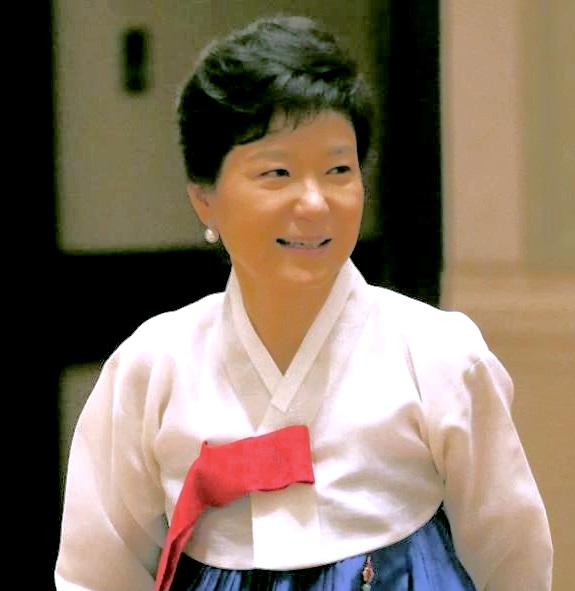 Ms. Park Geun-Hye was born in 1952 during the Korean War. Her father was at the time a ranking military officer, Korea's late President Park Cheong-Hee. She spent many of her early adult years working side by side with her father, after her mother had mistakenly been assassinated.
Ms. Park Geun-Hye was born in 1952 during the Korean War. Her father was at the time a ranking military officer, Korea's late President Park Cheong-Hee. She spent many of her early adult years working side by side with her father, after her mother had mistakenly been assassinated.
Korea's First Woman President:
The daughter of Park Chung-Hee, Ms. Geun-Hye Park (in Korean: pahk geun-hyeh), was elected president of the republic on 19 December 2012 and was inaugurated in February of 2013. The election of a female president is indicative of the monumental social changes occurring in South Korea, along with the rapid evolution of the country's economy and political climate.
Ms. Park's path to the highest political office in the land parallels the nation's journey from poverty to prosperity, but also suggests the nation's journey from dictatorial military leaders to a successful democracy. She had served 14 years in the Korean Assembly (Korean legislature) before being elected to South Korea's presidency.
When walking around Seoul, one can observe a great deal of art based on the letters of the Korean alphabet, i.e. Hangeul. Today in modern Korea, the colorfully clad royal entourage ceremonially changes the palace guard. Many amateur groups perform traditional dance and music and disciplined professional performers preserve the ancient arts of Korea.
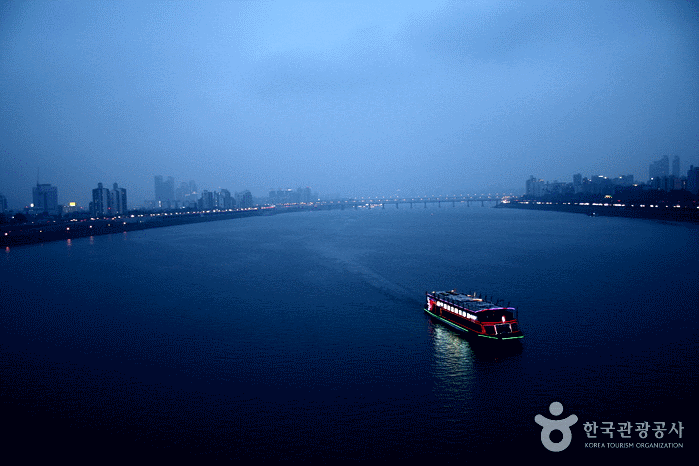 Akin to many major cities around the world, the city of Seoul straddles a river, both north and south banks of the Han River [in Korean: hahn-gahng]"
Akin to many major cities around the world, the city of Seoul straddles a river, both north and south banks of the Han River [in Korean: hahn-gahng]"
The Han River
[hahn] cuts the city of Seoul in half. North of the river stands many of the city's traditional royal palaces and traditional markets. South of the river is more contemporary than is the northern side and ebulliently reflects South Korea's dynamic growth. Since the global economic crisis of 2008, however, northern Seoul is experiencing a dramatic reformation. Modern, high-rise apartments, skyscrapers, luxury hotels, and the development of numerous suburbs of Seoul that are interconnected by a vast, modern subway system. Seoul's South River district (in Hangeul: "kahng-nahm-goo") was made famous by the musician Psy with his international hit music video "Gang-Nam Style". Many of Psy's satirical jabs are aimed at Korea's materialistic youth, who are often seen eating a $2.00 bowl of noodles for lunch, topped-off by a $5.00 cup of Starbuck's coffee. In speaking about Starbucks, reports have circulated that Seoul hosts more Starbucks than does New York City!
 K-Pop performer, Psy in Times Square, NYC (January 1, 2013): Psy's global hit music video "Gang-Nam Style", was a satirically comic video about the excesses of modern affluent Korean youth. Gang-Nam, which literally means "river south", is a very prosperous and expensive district in Seoul. Innumerable clubs, restaurants, cafes, fashionable clothing stores, and proprietary foreign-language schools, characterize the Gang-Nam lifestyle.
K-Pop performer, Psy in Times Square, NYC (January 1, 2013): Psy's global hit music video "Gang-Nam Style", was a satirically comic video about the excesses of modern affluent Korean youth. Gang-Nam, which literally means "river south", is a very prosperous and expensive district in Seoul. Innumerable clubs, restaurants, cafes, fashionable clothing stores, and proprietary foreign-language schools, characterize the Gang-Nam lifestyle.
The Korea Wave and Pop Culture:
Within a few years after the end of occupation and the end of World War II, the three-year Korean War broke out in June 1950 and devastated the country. Although two or three generations have lived and passed on, Korea's unfortunate modern history still weighs on the Korean psyche, as "han" [
hahn]. Han expresses itself at times in nationalistic expressions of indignation or excess pride.
Accomplishment is highly praised, thus, much honor is given to local sports heroes and entertainers who perform well internationally. The success of Korean TV drama syndications and Korean popular music (K-Pop) around the world are a great source of national pride. In colloquial parlance, the phenomenon is known as
"Hallyu" [hahl-yuh], or the
Korea Wave.
Korean pop performer, Psy, brings in the new year in Times Square New York (2013).
Looking Forward:
The 21st century seems to be an era of relatively stable economic prosperity in South Korea, although some evidence exists of rising income inequality, which seems to be a common phenomenon in the developed world. To the nation’s credit, South Korea has transitioned from a nation receiving aid from the international community to a nation of giving and helping other nations in need. The miracle on the Han is truly a miracle.
Reporters of 19th-century Korean history have incorrectly taught us that Admiral Yi's fighting ships were clad in metal armor. Contemporary historians have decided that this is not true. The turtle ships' successes against the invaders stems from their very high maneuverability, i.e. short turning radius, and superior firepower. Admiral Yi also receives credit for being a brilliant military strategist, despite never having had formal naval warfare training.
Editorial Comment:
Designating contemporary national heroes can be a treacherous road to travel; one person's hero is often another person's enemy. As time passes, however, the smoke of ideological confrontation dissipates and sensible, rational selections often emerge. Future generations may eventually bestow sainthood upon two presidents who have each made their indelible mark on Korean society in dramatically different ways, namely Kim Dae-Jung [joong] and Park Chung-Hee, who were bitter rivals of each other for decades. Let us speculate that modern volatile Korean politics reinforce a theory that vibrant societies are the result of the interplay and confrontation of ideas from diverse ends of the social, political, and economic spectra. Long live vitality and passion. RB
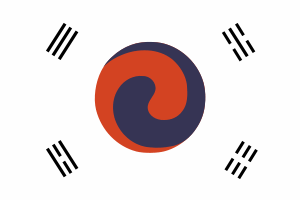 The flag shown on the left has been the flag of
The flag shown on the left has been the flag of 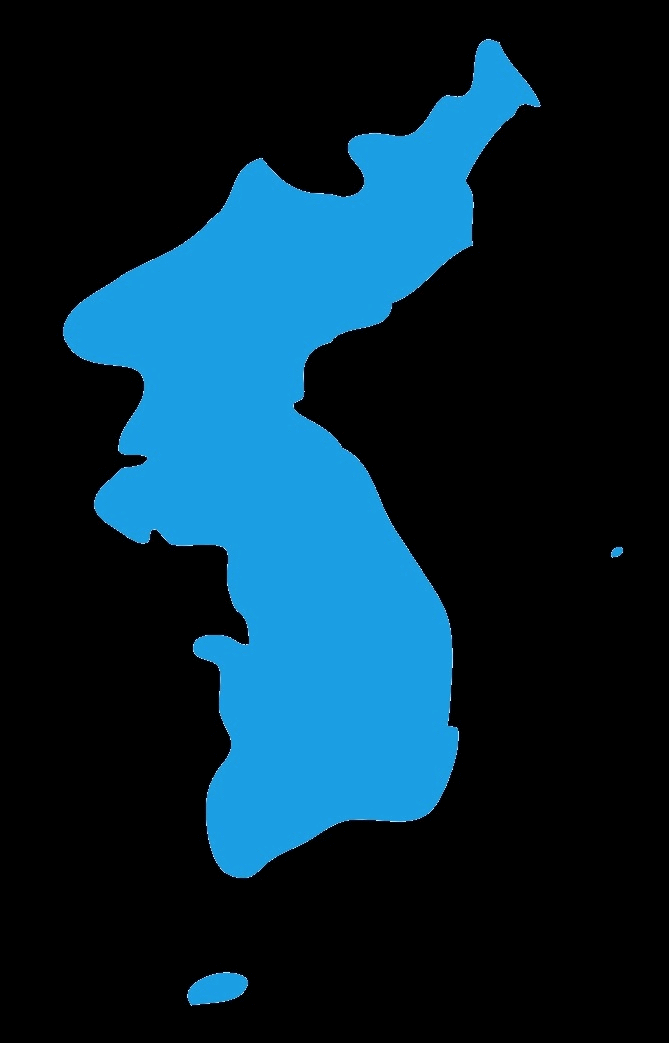
 The flag shown on the left has been the flag of
The flag shown on the left has been the flag of 


![The Axis Powers' flags fly together : Germany, Japan, and Italy. [Wikipedia]](4_Graphics/Axis Powers--Germany-Italy-Japan.gif)
![The Allied Powers [Wikipedia]](4_Graphics/Yalta_summit_1945__C,_R,_S.jpg)
![Cola drink: Liberation Day [Image Source: ambiguous]](4_Graphics/815__ColaCan.jpg)



.jpg)
